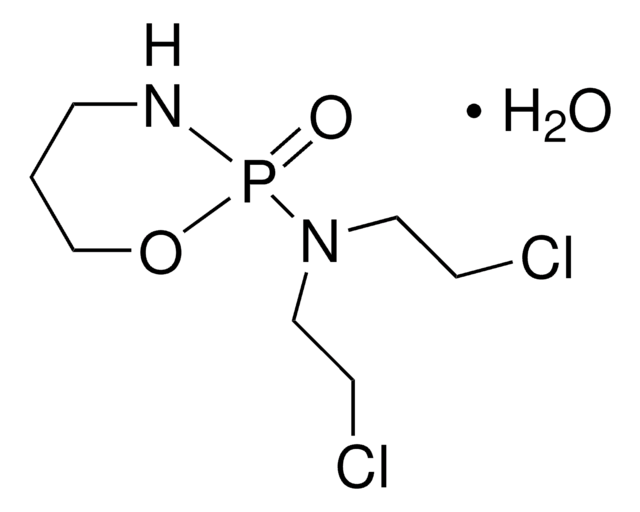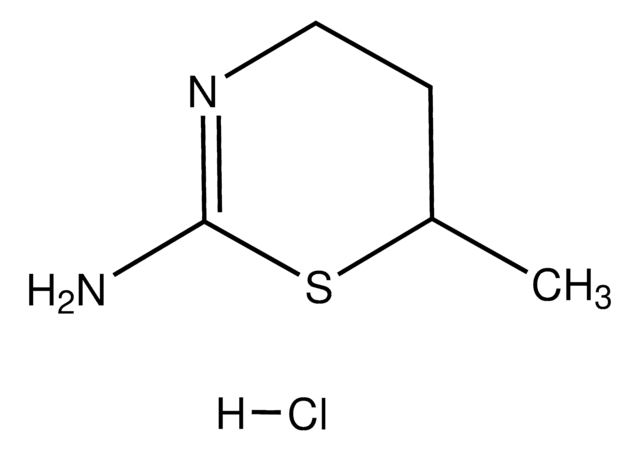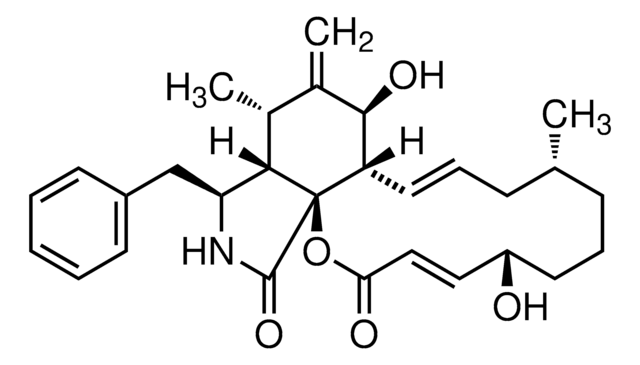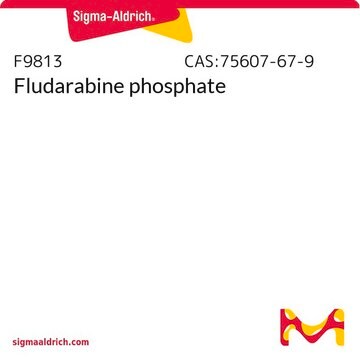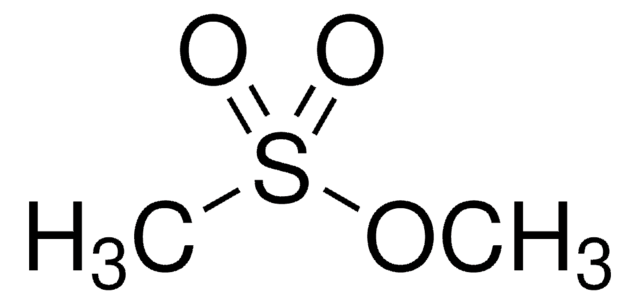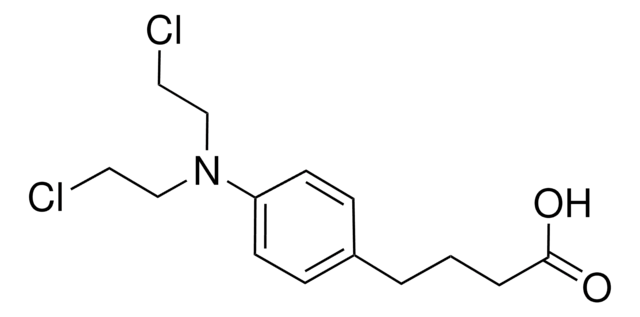C0768
Cyclophosphamide monohydrate
bulk package
Synonym(s):
2-[Bis(2-chloroethyl)amino]tetrahydro-2H-1,3,2-oxazaphosphorine 2-oxide, Cytoxan
About This Item
Recommended Products
Quality Level
Assay
97.0-103.0% (HPLC)
form
powder
mp
49-51 °C (lit.)
storage temp.
2-8°C
SMILES string
[H]O[H].ClCCN(CCCl)P1(=O)NCCCO1
InChI
1S/C7H15Cl2N2O2P.H2O/c8-2-5-11(6-3-9)14(12)10-4-1-7-13-14;/h1-7H2,(H,10,12);1H2
InChI key
PWOQRKCAHTVFLB-UHFFFAOYSA-N
Gene Information
human ... ALDH1A1(216) , ALDH1B1(219)
Looking for similar products? Visit Product Comparison Guide
General description
Application
- to test its antitumor effect on TC-1 tumor cells
- as a component of multidrug solution for isolation of resistant human burkitt lymphoma cell line
- in testing antitumor immunity in mouse tumor cell lines
Biochem/physiol Actions
Features and Benefits
Signal Word
Danger
Hazard Statements
Precautionary Statements
Hazard Classifications
Acute Tox. 3 Oral - Carc. 1B - Muta. 1B - Repr. 1A
Storage Class Code
6.1C - Combustible acute toxic Cat.3 / toxic compounds or compounds which causing chronic effects
WGK
WGK 3
Personal Protective Equipment
Choose from one of the most recent versions:
Already Own This Product?
Find documentation for the products that you have recently purchased in the Document Library.
Customers Also Viewed
Articles
We presents an article on ABC Transporters and Cancer Drug Resistance
Cancer research has revealed that the classical model of carcinogenesis, a three step process consisting of initiation, promotion, and progression, is not complete.
Related Content
n proliferating cells, the cell cycle consists of four phases. Gap 1 (G1) is the interval between mitosis and DNA replication that is characterized by cell growth. Replication of DNA occurs during the synthesis (S) phase, which is followed by a second gap phase (G2) during which growth and preparation for cell division occurs. Together, these three stages comprise the interphase phase of the cell cycle. Interphase is followed by the mitotic (M) phase.
Apoptosis, or programmed cell death (PCD), is a selective process for the removal of unnecessary, infected or transformed cells in various biological systems. As it plays a role in the homeostasis of multicellular organisms, apoptosis is tightly regulated through two principal pathways by a number of regulatory and effector molecules.
Chromatograms
application for HPLCOur team of scientists has experience in all areas of research including Life Science, Material Science, Chemical Synthesis, Chromatography, Analytical and many others.
Contact Technical Service